Advanced Custom Fields
If you’re like me, you probably love tinkering with your WordPress site to make it look just right. But sometimes, the default options just don’t cut it. That’s where Advanced Custom Fields (ACF) comes in. This incredible plugin lets you add all kinds of custom fields to your posts and pages, giving you the power to create a truly unique and functional website.
What is Advanced Custom Fields?
So, what exactly is ACF? In a nutshell, it’s a plugin that allows you to add custom fields to your WordPress edit screens. These fields can be used to collect extra information from your users, display additional data on your site, or even control how your content is presented. Whether you’re a developer looking to build custom solutions or a blogger wanting more flexibility, ACF has got you covered.
Why Use Advanced Custom Fields?
Before we get into the details, let’s talk about why you might want to use ACF in the first place. WordPress is a fantastic platform, but sometimes you need more than what it offers out of the box. Custom fields let you add specific information to your posts and pages, making your site more dynamic and interactive. With ACF, you can create fields for anything you can imagine, from simple text inputs to complex galleries and maps.
My Journey with ACF
Let me share a little story with you. When I first started using WordPress, I was thrilled with how easy it was to get a site up and running. But as I began to grow my blog, I realized I needed more control over how my content was displayed. I wanted to add custom data to my posts without having to mess with code. That’s when I discovered ACF. It was like a lightbulb moment! Suddenly, I could add custom fields for everything I needed—author bios, featured posts, even custom layouts for different types of content. It transformed the way I managed my site and made everything so much easier.
Key Features of Advanced Custom Fields
Now, let’s break down some of the standout features that make ACF so powerful.
1. Easy Field Creation
ACF makes it super simple to create custom fields. You can choose from a wide variety of field types, including text, textarea, number, email, URL, and more. Each field type comes with its own set of options, allowing you to customize it to fit your needs perfectly. The user-friendly interface means you can set up your fields in minutes, even if you’re not a developer.
2. Flexible Field Groups
One of the best things about ACF is how it organizes fields into groups. You can create field groups and assign them to specific post types, pages, or even custom post types. This means you can have different sets of fields for different parts of your site, making it easy to manage your content.
3. Conditional Logic
ACF’s conditional logic feature is a game-changer. It lets you show or hide fields based on the values of other fields. For example, you could create a dropdown menu that, when selected, displays a set of additional options. This makes your forms more dynamic and tailored to your needs.
4. Repeater Fields
If you need to add multiple sets of fields, ACF’s repeater fields are perfect. They allow you to create a set of fields that can be repeated as many times as needed. This is great for things like creating lists, adding multiple images, or creating complex layouts.
5. Custom Field Types
ACF doesn’t just limit you to the standard field types. It also lets you create your own custom field types using the ACF API. This means you can build exactly what you need, whether it’s a custom slider, a color picker, or something completely unique.
Hands-On: How to Use Advanced Custom Fields
Getting started with ACF is a breeze. Here’s a step-by-step guide to help you hit the ground running.
Step 1: Installation and Activation
First things first, you’ll need to install and activate the plugin. You can find it in the WordPress plugin repository, or you can download it from the official website. Once installed, activate it, and you’re ready to go.
Step 2: Create a Field Group
Head over to the ACF menu in your WordPress dashboard and click on “Field Groups.” Here, you can create a new field group and start adding fields. Give your field group a name and set the location rules to determine where it will appear.
Step 3: Add Fields
Within your field group, click “Add Field” to start creating your custom fields. Choose the field type, set the label, and configure the options. You can add as many fields as you need, and they’ll all be grouped together.
Step 4: Display Fields in Your Theme
To display your custom fields in your theme, you’ll need to edit your theme files. Don’t worry, it’s not as scary as it sounds! ACF provides simple functions to retrieve and display field values. Just add these functions to your theme where you want the custom field data to appear.
Real-Life Application: Bringing a Site to Life
Imagine you’re running a recipe blog. You want each recipe post to include specific details like ingredients, cooking time, and difficulty level. Here’s how ACF can help:
1. Custom Recipe Fields
Create a field group called “Recipe Details” and add fields for ingredients, cooking time, and difficulty level. Assign this field group to your recipe post type, so it appears on the edit screen for each recipe.
2. Dynamic Content Display
Edit your theme’s single post template to display these custom fields. Use ACF’s functions to pull the data from each field and display it in a neat, organized layout. Now, each recipe post will have a consistent format, making it easy for your readers to find the information they need.
3. Enhanced User Experience
With custom fields, you can also add features like star ratings, video tutorials, and printable recipe cards. This enhances the user experience and keeps your readers coming back for more.
Troubleshooting and Support
No tool is perfect, and sometimes you might run into issues. The good news is, ACF has excellent documentation and a responsive support team. Whether you’re facing compatibility issues or need help with a custom field, there’s always someone ready to assist you.
Community and Resources
ACF isn’t just a plugin; it’s a community. There are forums, Facebook groups, and a vibrant online community where users share tips, tricks, and inspiration. It’s a great place to learn and grow, especially if you’re new to WordPress.
Final Thoughts
In the end, Advanced Custom Fields is more than just a plugin. It’s a powerful tool that can transform your WordPress site from a basic blog to a fully customized website. It’s user-friendly, highly customizable, and packed with features that make your life easier. Whether you’re a developer building complex solutions or a blogger looking for more flexibility, ACF has something to offer.
So, if you’re looking to take your WordPress site to the next level, give ACF a try. Trust me, you won’t regret it. It’s like having a secret weapon in your web design arsenal, ready to help you create stunning, functional sites with ease.
User-Friendly: ACF is incredibly easy to use. Even if you're not a developer, you can quickly set up custom fields and add them to your site.
Versatile: The plugin offers a wide variety of field types, from text and number fields to more complex ones like galleries and maps. This means you can customize your site in countless ways.
Powerful Features: With features like conditional logic and repeater fields, ACF lets you create interactive and engaging content without writing any code.
When I started using ACF, it changed the way I managed my site. I could easily add extra information to my posts, making them more informative and visually appealing. The plugin is reliable and integrates seamlessly with any WordPress theme.
Advanced Custom Fields is a powerful and user-friendly plugin that adds incredible flexibility to your WordPress site. Whether you're a beginner or an experienced developer, ACF helps you create a more dynamic and engaging website with ease. Highly recommended!
6.3.4
Release Date 18th July 2024
- Security Fix – The ACF shortcode now prevents access to fields from different private posts by default. View the release notes for more information
- Fix – Users without the
edit_postscapability but with custom capabilities for a editing a custom post type, can now correctly load field groups loaded via conditional location rules - Fix – Block validation no longer validates a field’s sub fields on page load, only on edit. This resolves inconsistent validation errors on page load or when first adding a block
- Fix – Deactivating an ACF PRO license will now remove the license key even if the server call fails
- Fix – Field types returning objects no longer cause PHP warnings and errors when output via
the_field,the_sub_fieldor the ACF shortcode, or when retrieved by aget_function with the escape html parameter set - Fix – Server side errors during block rendering now gracefully displays an error to the editor
6.3.3
Release Date 27th June 2024
- Enhancement – All dashicons are now available to the icon picker field type
- Fix – The True/False field now correctly shows it’s description message beside the switch when using the Stylized UI setting
- Fix – Conditional logic values now correctly load options when loaded over AJAX
- Fix – ACF PRO will no longer trigger license validation calls when loading a front-end page
- i18n – Fixed an untranslatable string on Option Page previews
6.3.2.1
Release Date 24th June 2024
PRO Only Release
- Fix – ACF Blocks no longer trigger a JavaScript error when fetched via AJAX
6.3.2
Release Date 24th June 2024
- Security Fix – ACF now generates different nonces for each AJAX-enabled field, preventing subscribers or front-end form users from querying other field results
- Security Fix – ACF now correctly verifies permissions for certain editor only actions, preventing subscribers performing those actions
- Security Fix – Deprecated a legacy private internal field type (output) to prevent it being able to output unsafe HTML
- Security Fix – Improved handling of some SQL filters and other internal functions to ensure output is always correctly escaped
- Security Fix – ACF now includes blank index.php files in all folders to prevent directory listing of ACF plugin folders for incorrectly configured web servers
6.3.1.2
Release Date 6th June 2024
PRO Only Release
- Fix – ACF Blocks in widget areas no longer cause a fatal error when no context is available
- Fix – ACF Blocks with no fields assigned no longer show a gap in the sidebar where the form would render
6.3.1.1
Release Date 6th June 2024
PRO Only Release
- Fix – Repeater and Flexible Content fields no longer error when duplicating or removing rows containing Icon Picker subfields
- Fix – ACF Blocks containing Flexible Content fields now correctly load their edit form
- Fix – ACF Blocks no longer have a race condition where the data store is not initialized when read
- Fix – ACF Blocks no longer trigger a JS error for blocks without fields and with an empty no-fields message
- Fix – ACF Block preloading now works correctly for fields consuming custom block context
- Fix – ACF Block JavaScript debug messages now correctly appear when SCRIPT_DEBUG is true
6.3.1
Release Date 4th June 2024
- Enhancement – Options Pages registered in the UI can now be duplicated
- Fix – ACF Block validation now correctly validates Repeater, Group, and Flexible Content fields
- Fix – ACF Block validation now correctly validates when a field is using a non-default return type
- Fix – Fields moved between field groups now correctly updates both JSON files
- Fix – Icon Picker fields now render correctly when using left-aligned labels
- Fix – Icon Picker fields no longer renders tabs if only one tab is selected for display
- Fix – Icon Picker fields no longer crash the post editor if no icon picker tabs are selected for displayed
- Fix – True/False field now better handles longer On/Off labels
- Fix – Select2 results loaded by AJAX for multi-select Taxonomy fields no longer double encode HTML entities
6.3.0.1
Release Date 22nd May 2024
- Fix – A possible fatal error no longer occurs in the new site health functionality for ACF PRO users
- Fix – A possible undefined index error no longer occurs in ACF Blocks for ACF PRO users
6.3.0
Release Date 22nd May 2024
- New – ACF now requires WordPress version 6.0 or newer, and PHP 7.4 or newer.
- New – ACF Blocks now support validation rules for fields. View the release notes for more information
- New – ACF Blocks now supports storing field data in the postmeta table rather than in the post content
- New – Conditional logic rules for fields now support selecting specific values for post objects, page links, taxonomies, relationships and users rather than having to enter the ID
- New – New Icon Picker field type for ACF and ACF PRO
- New – Icon selection for a custom post type menu icon
- New – Icon selection for an options page menu icon
- New – ACF now surfaces debug and status information in the WordPress Site Health area
- New – The escaped html notice can now be permanently dismissed
- Enhancement – Tab field now supports a
selectedattribute to specify which should be selected by default, and support class attributes - Fix – Block Preloading now works reliably in WordPress 6.5 or newer
- Fix – Select2 results loaded by AJAX for post object fields no longer double encode HTML entities
- Fix – Custom post types registered with ACF will now have custom field support enabled by default to better support revisions
- Fix – The first preview after publishing a post in the classic editor now displays ACF fields correctly
- Fix – ACF fields and Flexible Content layouts are now correctly positioned while dragging
- Fix – Copying the title of a field inside a Flexible Content layout no longer adds whitespace to the copied value
- Fix – Flexible Content layout names are no longer converted to lowercase when edited
- Fix – ACF Blocks with attributes without a default now correctly register
- Fix – User fields no longer trigger a 404 when loading results if the nonce generated only contains numbers
- Fix – Description fields for ACF items now support being solely numeric characters
- Fix – The field group header no longer appears above the WordPress admin menu on small screens
- Fix – The
acf/json/save_file_namefilter now correctly applies when deleting JSON files - i18n – All errors raised during ACF PRO license or update checks are now translatable
- Other – The ACF Shortcode is now disabled by default for new installations of ACF as discussed in the ACF 6.2.7 release notes
6.2.10
Release Date 15th May 2024
- Security Fix – ACF Blocks no longer allow render templates, or render or asset callbacks to be overridden in the block’s attributes. For full information, please read the release blog post
6.2.9
Release Date 8th April 2024
- Enhancement – The Select2 escapeMarkup function can now be overridden when initializing a custom Select2
- Fix – “Hide on Screen” settings are now correctly applied when using conditionally loaded field groups
- Fix – Field names are no longer converted to lowercase when editing the name
- Fix – Field group titles will no longer convert HTML entities into their encoded form
6.2.8
Release Date 2nd April 2024
- New – Support for the Block Bindings API in WordPress 6.5 with a new
acf/fieldsource. For more information on how to use this, please read the release blog post - New – Support for performance improvements for translations in WordPress 6.5
- Enhancement – A new JS filter,
select2_escape_markupnow allows fields to customize select2’s HTML escaping behavior - Fix – Options pages can no longer set to have a parent of themselves
- Fix – ACF PRO license activations on multisite subsite installs will now use the correct site URL
- Fix – ACF PRO installed on multisite installs will no longer try to check for updates resulting in 404 errors when the updates page is not visible
- Fix – ACF JSON no longer produces warnings on Windows servers when no ACF JSON folder is found
- Fix – Field and layout names can now contain valid non-ASCII characters
- Other – ACF PRO now requires a valid license to be activated in order to use PRO features. Learn more


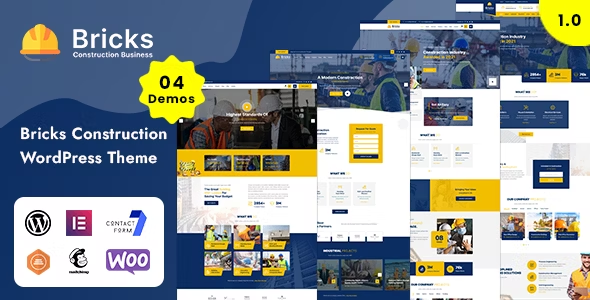
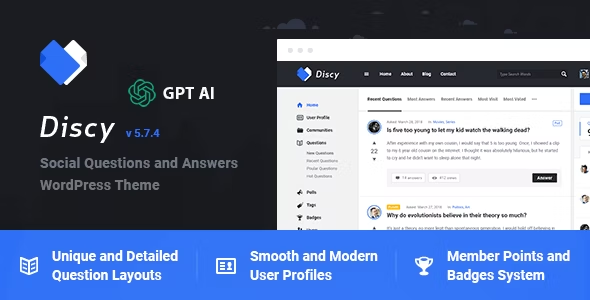
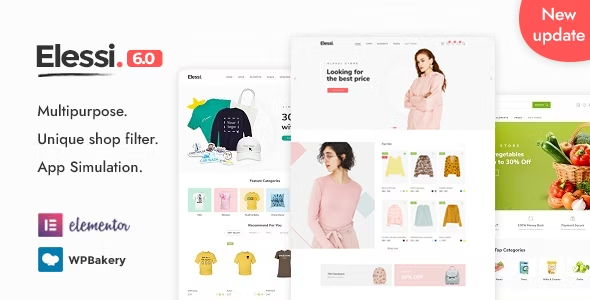




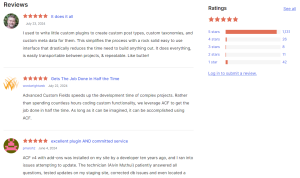



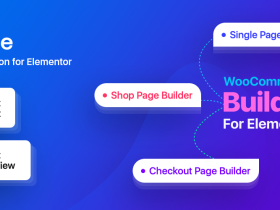
发表评论